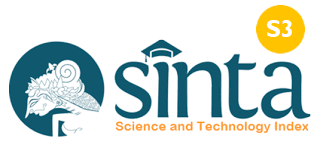Penerapan Metode Pembelajaran Sugesti-Imajinasi Untuk Meningkatkan Minat Dan Hasil Belajar Menulis Cerpen Siswa
DOI:
https://doi.org/10.37329/cetta.v3i1.409Keywords:
Suggestion-Imagination Learning Method, Interest, Learning OutcomesAbstract
This study aims to increase the interest and learning outcomes of short story writing students of the IX-B class of SMP Negeri 3 Selat in the first semester of the 2018/2019 academic year. The subjects in this study were students of class IX-B, SMP Negeri 3 Selat, amounting to 31 people, consisting of 13 male students and 18 female students in the first semester of the 2018/2019 academic year. This study uses a class action research design through two stages. Data about students' interest in learning was collected by observation sheets, and short story learning outcomes were collected by the test method. Both types of data are analyzed by quantitative descriptive methods. The results of this study indicate that the application of the Suggestion-Imagination learning method can increase interest in learning and learning outcomes in short story writing for Class IX-B students of SMP Negeri 3 Selat in the first semester of the 2018/2019 academic year. with an average of 65.16 and completeness 51.61% in the first stage, being an average of students' learning interest of 83.55 and a completeness level of 93.55% in the second stage. While student learning outcomes also increased from an average of 68.87 in the first stage and the classical completeness rate of 51.61%, increased to an average of 75.48 in the second stage and a mastery level of 77.42%. Based on these results it is recommended; (1) utilize the Suggestion-Imagination method to increase interest and learning outcomes of short story writing; (2) make the results of this study a consideration in developing learning methods; (4) try this method on other material, or even on other subjects.
References
Burhan, N. (2011). Penilaian dalam Pengajaran Bahasa dan Sastra. Yogyakarta: BPFE.
Crow, L. . & A. C. (1989). Psycology Pendidikan. In Educational Psycology. Yogyakarta: Nurcahya.
De Porter, B. and M. H. (1999). Quantum learning: Unleashing the genius in you, atau Quantum learning. In Membiasakan belajar nyaman dan menyenangkan. Bandung: Kaifa.
Depdiknas. (2008). Kamus Besar Bahasa Indonesia Pusat Bahasa. Jakarta: PT Gramedia Pustaka Utama.
Haryadi. (2010). Model Pembelajaran. Semarang: Uness.
Marsini. (2019). Upaya Meningkatkan Kemampuan Menulis Cerita dengan Metode Sugesti Imajinasi Melalui Media Pergelaran Wayang pada Siswa Kelas IX A SMP Negeri 6 Semarang.
Trimantara, P. (2005). Metode Sugesti-Imajinasi dalam Pembelajaran Menulis dengan Media Lagu. Jurnal Pendidikan.
Wayan Nurkancana, S. (1992). Evaluasi Hasil Belajar. Surabaya: Usaha Nasional.
Wardani, IGAK. 1981. Pengajaran Sastra. Makalah disajikan dalam Lokakarya di Malang Tahap ke- 2 Proyek Pengembangan Guru, Malang, 12 Juli.
Wulandari, Gusti Ayu Putu Trisna. 2007. “Penerapan Teknik Tanya Jawab untuk Meningkatkan Kemampuan Menulis Eksposisi Siswa Kelas X SMA Negeri 2Gerokgak”. Skripsi (tidak diterbitkan). Jurusan PBSID, FBS, Undiksha.
Yonny, Acep, dkk. 2010. Menyusun Penelitian Tindakan Kelas. Yogyakarta: Familia.
Downloads
Published
How to Cite
Issue
Section
License
An author who publishes in the Cetta : Jurnal Ilmu Pendidikan agrees to the following terms:
- Author retains the copyright and grants the journal the right of first publication of the work simultaneously licensed under the Creative Commons Attribution-ShareAlike 4.0 License that allows others to share the work with an acknowledgement of the work's authorship and initial publication in this journal
- Author is able to enter into separate, additional contractual arrangements for the non-exclusive distribution of the journal's published version of the work (e.g., post it to an institutional repository or publish it in a book) with the acknowledgement of its initial publication in this journal.
- Author is permitted and encouraged to post his/her work online (e.g., in institutional repositories or on their website) prior to and during the submission process, as it can lead to productive exchanges, as well as earlier and greater citation of the published work (See The Effect of Open Access).
Read more about the Creative Commons Attribution-ShareAlike 4.0 Licence here: https://creativecommons.org/licenses/by-sa/4.0/.





